Plant Study

T his is a story about a gray fluffy cat named Rudy.
Rudy is a very nice cat and lives in a little blue house in
the forest with his owner Mary.

Now Mary loves Rudy and she takes good care of him. Mary made a special place for Rudy to
sit and look out of the window.

Why she even built a little door for him, so he could go
in and out all day long.
Every morning before Rudy would go outside,
Mary would brush him. This was his favorite time of day.
Purrrr….Purrrrr….Purrrrrrrrrrr.
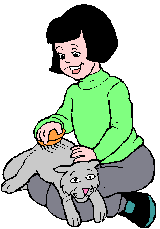
Now Mary had a big garden and she planted some nice sunflowers and tomatoes.
Rudy would follow her into the garden and try to help with the planting. He would get right into the dirt and dig like crazy with his paws spraying dirt everywhere. When he was done there would be holes everywhere.
This really wasn’t very helpful, but Mary loved to have him working with her. She would tell him “you are such a hard worker, and you are getting to be quite a good gardener too.”
Rudy felt happy and it made him Purr. He was proud to be such a good helper!
Soon the plants began to grow and there were
tomatoes and sunflowers everywhere.
![]()


After working in the garden for several days, Rudy began to get bored with digging the little holes and didn’t want to help anymore. This made Mary sad, so she tried to think of what she could do to get him interested in the garden again.
Then Mary remembered that there is a plant that kitties like very much. She went to the market and purchased the special plant.

She brought it home and took it out to the garden, dug a hole, and put it in a nice sunny spot.
Soon the little plant began to get bigger and bigger and bigger.
In a short time it had grown to almost three feet tall!
It was beautiful with dark green fuzzy leaves, a square stem and pretty purple flowers at the top.
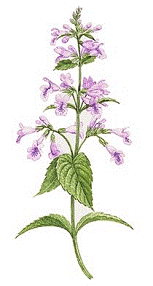
One day, Rudy went out to play and was walking past the garden. He said, “What is that delicious smell that I smell?” He put his nose straight up in the air… sniff, sniff, sniff…. “humm…that is a very special smell…I like that.” “Where is that smell coming from?” He began to look around and then he noticed the new plant that Mary had put in the garden. “Well I need to see what this is,” he said. He went over to the garden gate and verily squeezed his big belly through. He hopped over to the mysterious plant and began to sniff it. “This is wonderful he exclaimed!” Sniff, sniff, sniff… “MEOWWW… THIS IS GREAT!” By now Rudy had rubbed it all over his face and then he tore some leaves off and had them scattered all over the ground. Then he flopped down onto his back and put his feet straight up into the air. He was laughing and having so much fun.
Mary heard this strange noise coming from the garden and went out to see what it was. There she saw Rudy, rolling and jumping and laughing with a big smile on his face as he proceeded to cover himself with the scent from the special plant for kitties.
Mary bent down and looked at Rudy and said, “this is your very own special plant, and it is called Catnip.
Now this plant made Rudy want to learn more about plants and he decided to help Mary in her garden every day. This made Mary very happy.

Hey Kids, Rudy learned that an herb called Catnip is a plant that makes kitties feel very good. Did you know that there are many different kinds of plants and some can be used for medicine? Catnip is mostly used for cats but it can also be made into a tea that is soothing to the nerves for humans, and has been used to treat headaches.
All herbs have been given a Latin name.
The Latin name for Catnip is Nepeta cataria.
Herbs are grouped into families like your family. You may have a brother or sister or cousin, well Catnip belongs to the mint family.
A mint plant can be used to make peppermint candy.
Always remember to ask an adult to help you find herbs, as some plants are poisonous. The safest way to study an herb is to buy some seeds at the market and plant them in the garden,
Be careful and have lots of fun learning about plants.
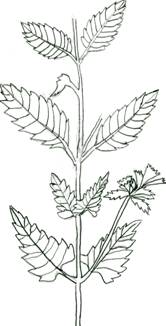
Catnip
Latin Name: Nepeta cataria Family: Labiatae/Lamiaceae Family: Catnip (mint family)
Common names : Cataria, Catmint, Catwort, Catrup, Catnep, Field Balm, Chi Hsueh Tsao (Chinese)
Native American Name, Ojibwe: Gajugensibug
Related Species: There are dozens, if not hundreds, of catnip species. Calamintha is a genus that belongs to the family Lamiaceae.
Some other plants within the Family Lamiaceae: Jerusalem sage, beautyberry, bush mint, balm. It is also a distant relation of marijuana .
Common Catnip(Nepeta cataria)
White flowers, grows up to 3 feet. This is the variety most cats enjoy.
Camphor Catnip(Nepeta camphorata
White flowers with purple dots, grows up to 18 inches. Camphor scent.
Greek Catnip(Nepeta parnassica)
White, pale pink flowers, grows up to 18 inches.
Lemon Catnip(Nepeta cataria citriodora)
White flowers, spotted with purple, grows up to 3 feet. The leaves have a lemony scent.
Catmint(Nepeta mussinii)
Purple flowers. This plant has smallish, grey/green leaves. It grows up to 15 inches high.
Body System Affiliations:
1.Digestive system
2. Nervous system (1.)
Botanical Description:
Habit: Herb,
Size: Up to Three ft.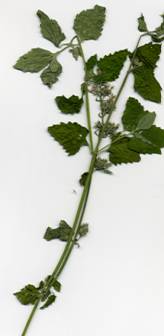
Pressed Catnip (11)
Arrangement:
The root is perennial and sends up square, erect and branched stems, 2 to 3 feet high, which are very leafy and covered with a mealy down. The heart shaped, toothed leaves are also covered with a soft, close down, especially on the under sides, which are quite white with it, so that the whole plant has a hoary, grayish appearance, as though it had had dust blown over it. (2.)
Leaves:
Opposite, ovate with heart shaped bases, coarsely toothed, 2-3 in. long; gray-green above, whitish beneath; downy, especially on the undersides.
Flowers:
Tubular, ¼ to ½ in. long, white with purple pink spots; two-lipped corollas; deep red anthers; tubular calyx, ribbed, five–parted; occur massed in spikes
Fruit: Four smooth, tiny nutlets. (3. Pg. 71)
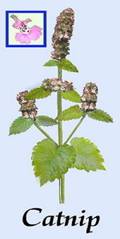 Bark: N/A
Bark: N/A
Twigs: Stems are square
Underground Parts: Tubers
Ecology:
Habitat: Average, sandy well-drained soil. Full sun to partial shade.
Range: Eurasia; naturalized throughout North America. (3. Pg.72)
Native Where: Catnip is native from the eastern Mediterranean region to the western Himalayas, central Asia, southern Siberia, and China.(4.)
Ecological Relationships: N/A
Propagation:
Technique: Propagate by seed sown in autumn or spring, or by division in spring, by stem-tip or softwood cuttings in (1a.) spring or summer.
Timing: Seedlings reach flowering size in the first year. (5. Pg. 317)
Harvest:
Plant Part: Leaves, stems and flowers
Season of Harvest: Late Summer
Method of Harvest: Harvest young leaves and flowering tops when fully open, before they turn brown. Both blooms and foliage shrink at least 50 percent. The leaves shrivel and darken, while the flowers lose coloration. The fresh, woodsy fragrance remains after drying.
Plants are cut when in bud and dried for use in infusions. Pick leaves when young for culinary purposes and use fresh or dried. (6.)
Ecological Considerations of Harvest: If possible, harvest part of a plant, leaving it alive to reproduce. Pinch off individual leaves, flower heads, or rhizome segments, leaving the plant intact to flourish.If you harvest fragile native plants, take them from areas about to be developed by bulldozing, paving, or clear cutting.While some plants can survive major development, most cannot. Take only as much as you will use, then transplant others to places where they can live. (7.) Cultural Considerations of Harvest:Flavorings (FLA), tea (TEA), fragrances (FRA), ornamental (ORN) and folk medicine (MED) (8.)
Cautions: No cautions
Western Uses/Relationships:
Food: Catnip is not eaten as a food, although it can be drunk as a tea.
Honeybees are very attracted to the flowers when they are in full bloom, about late August in the Northwest.
Catnip honey.
Part Used: The leaves and flowers are used as medicine.
The plant parts used in herbal preparations are the aerial parts.
Medicinal uses:
Catnip has long been used medicinally, as a tea, juice, tincture, infusion, and poultice. The tea was used to treat cancer, insanity, nervousness, nightmare, scurvy, and tuberculosis, while a root extract served as a mild stimulant. Catnip was employed orally to treat colic, diarrhea, flatulence, hiccups, whooping cough, the common cold, measles, asthma, yellow fever, scarlet fever, smallpox, jaundice, and to induce parturition and encourage menstruation. Poultices were used for hives, sore breasts of nursing mothers, and to reduce swelling. A poultice of catnip and other herbs was employed to treat aching teeth in the Ozark Mountains (Simon et al. 1984). Catnip was sometimes smoked to relieve respiratory ailments. Despite this long list of uses, catnip is not employed in modern Western medicine, although it is still used in Chinese medicine (Duke and Ayensu 1985). (4)

Effect on cats:
This is a plant that has aromatic oil called nepetalactone, which seems to stimulate the cat’s scent glands.
Once the cat has come in contact with the plant he will begin to rub on it and roll on the leaves to release the scent.
This seems to create a type of euphoria in the animal. He may lie on his back batting at the air.
The animal may drool and bite at the plant. This will continue for about one hour or less and then the cat seems to loose all interest in the plant.
It is said that only about 70% of the cats have a reaction to catnip.
(12)
Folklore:
It was once believed that smoking the leaves would produce a mild hallucinogenic effect. Although this use has since been dispelled, it may work in some individuals. It was also believed to deter the (evil-eye) from children given to fits, this because of its ability to calm an extremely agitated child and diminish nightmares.
Recipes:
To 1 cup of boiling water add 2 tsp. dried herb; steep for 10 min. give warm in cup doses-½ cup for children 1 tbsp. diluted or in milk for babies.
 (12)
(12)
History: The plant has an aromatic, characteristic odor, which bears a certain resemblance to that of both Mint and Pennyroyal.
It is owing to this scent that it has a strange fascination for cats, which will destroy any plant of it that may happen to be bruised.
There is an old saying about this plant:
'If you set it, the cats will eat it,
If you sow it, the cats don't know it.'
And it seems to be a fact that cats, always destroy plants transplanted, unless protected, but they never meddle with the plants raised from seed, being only attracted to it when it is in a withering state, or when the peculiar scent of the plant is excited by being bruised in gathering or transplanting. (13)
Nepeta cataria
Catnip
 (14)
(14)
1.Cat-World. 2005. Online at. http://www.cat-world.com.au/Catnip.htm. Visited 10-22-05.
1a. All Nature. 1998-2004. Online at http://altnature.com/gallery/catnip.htm. Deb Jackson & Karen Bergeron Visited 11-25-05.
2. Botanical.com, A Modern Herbal. 2005. Online at Botanical.com http://botanical.com/botanical/mgmh/c/catmin36.html#des. Visited 11-11-05.
3. Kowalchik,C. & Hylton, W.H.(Eds.). 1987 Rodale’s Illustrated Encyclopedia of Herbs. Pennsylvania: Rodale Press, Emmaus, Pennsylvania.
4. National Research Council Canada. 1995. Online at http://pubs.nrc-cnrc.gc.ca/cgi-bin/rp/rp2_gene_e?mlist-94-sample_e.html. visited 11- 2- 05. (The Herb Society of America Encyclopedia of Herbs & Their Uses, pg 317 Deni Brown DK Dorling Kindersley95 Madison Ave. New York 1995)
6. Maas Nursery. 2003. Online at http://www.maasnursery.com/catnip.htm. visited 10-29-05.
7. A plant lover's guide to wild crafting. Online at http ://business.gorge.net/longevity/Publications/Wildcrafting%20Guide.htm. Visited 11- 5-05.
8. Plants For A Future. 1995. Online at http ://www.ibiblio.org/london/alternative-healthcare/herbal-references/faqs/herb-growing.faq. Visited 11-10-05.
9. Pet Care Tips. Online at http://www.petcaretips.net/catnip.html. 10-31-05.
12 Photo and drawing. 1998-2005 HowStuffWorks, Inc.
Online at http://science.howstuffworks.com/framed.htm?parent=question303.htm&url=http://www.vet.purdue.edu/depts/addl/toxic/plant07.htm
13. Botanical.com . 1995-2005. Online at http://botanical.com/botanical/mgmh/mgmh.html. Visited 11-2-05